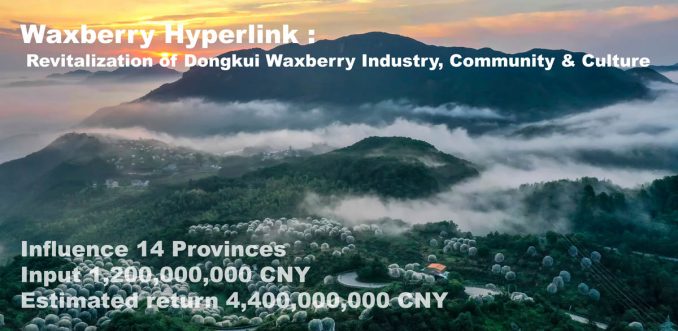
Waxberry has been cultivated in China for over 5, 000 years and linked to local industries, communities, and culture. However, urbanization hassled to problems such as rural hollowing, industry contraction, and soil pollution.
The Waxberry Hyperlink project in Taizhou City’s Huangyan District covers an area of 57,800 hectares to promote waxberry planting, fruit processing industry, and culture. By planning for “multi-industry + multi-regional collaborative development,” planners have restored countryside population, increased yield by 22, 500 RMB/ha/year, established a mother tree park for waxberry historical culture and technical exchange, reaffirming Huangyan’s leading position in the Dongkui Waxberry industry.
BACKGROUND
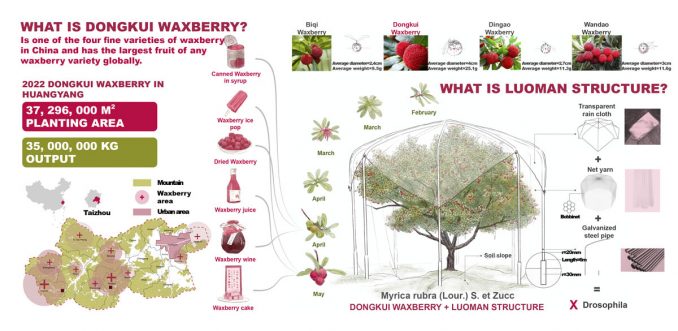
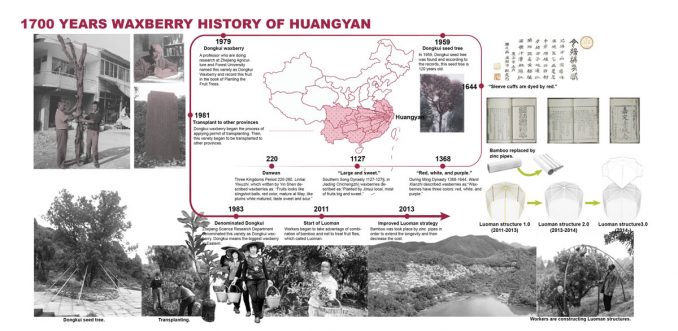
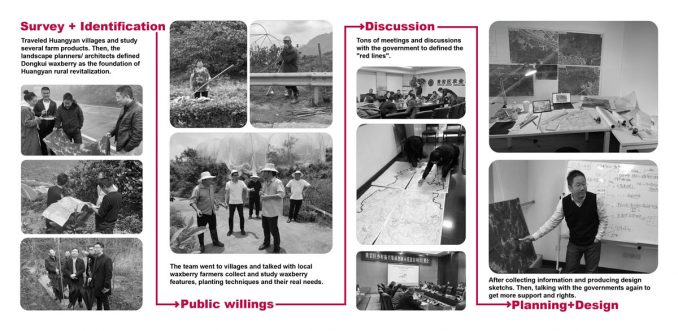
The world’s largest waxberry, Dongkui Waxberry (DW), has a cultivation history of over 200 years, originating from Huangyan. While 45 million DW sprouts have been transplanted to half of China over the past 40 years, contributing to 10 provinces’ economy. The outdated single mode has caused a decline in its influence from Huangyan.
CHALLENGES
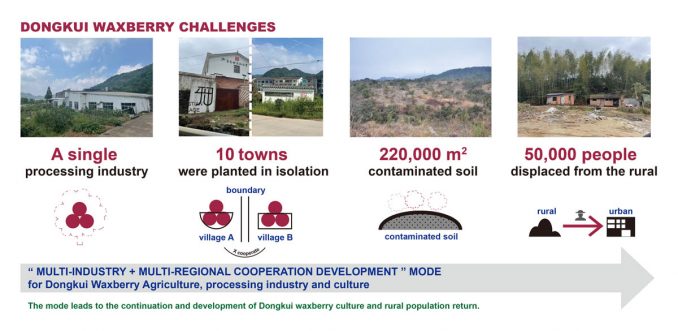
1.Single processing industry (Economy)
Huangyan’s DW production and influence in China are declining yearly due to a lack of diversified development as its birthplace.
2.Isolated Planting (Politics)
Huangyan’s DW planting and operating mode based on village and family units is isolated, lacking scale and sustainability, hindering the continuation of waxberry culture andtechniques, and vulnerable to external environment changes.
3.Soil Pollution (Ecology)
220,000 m² waxberry planting area of contaminated soil from tree death prevents secondary planting and reduces the planting scale.
4.Population Loss (Society)
The decline of rural waxberry industry and urbanization have led to nearly 50,000 rural populations’ loss in the past decade, resulting in economic decline and cultural loss.
STRATEGY/ ACHIEVEMENT
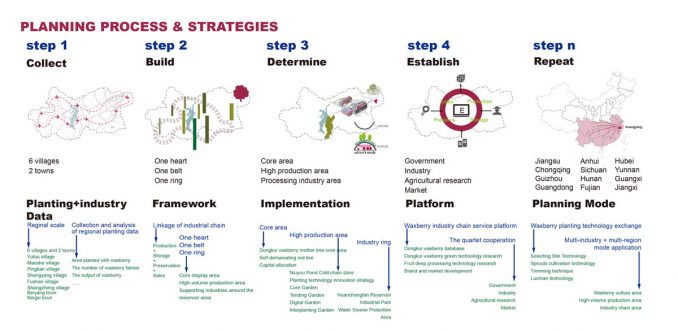
The Waxberry Hyperlink integrates government, expert, and stakeholder input, involving on-site research across 10 regions and over 500 km² to develop a “multi-industry + multi-regional coordination” planning strategy for DW, with a focus on landscape planning.
Step 1: Collection of planting land and industry data
Data on the terrain, soil, temperature, number of farmers, and waxberry productivity were collected and analyzed through field surveys of six villages and two towns.
Step 2: Building a cooperative framework.
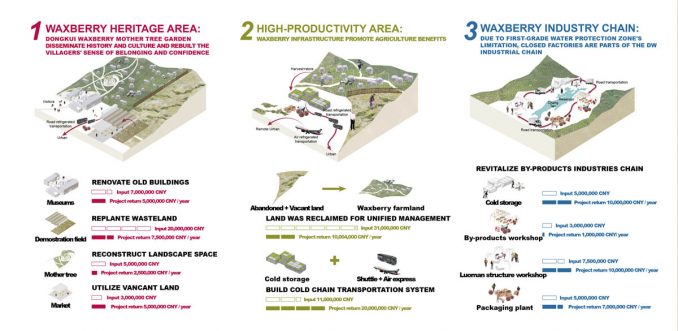
The team developed a “multi-industry & regional” plan for waxberry agriculture, planting, fruit industry, manufacturing, and culture.
Step 3: Determination of three implementation zones
A Core: Waxberry Heritage Area
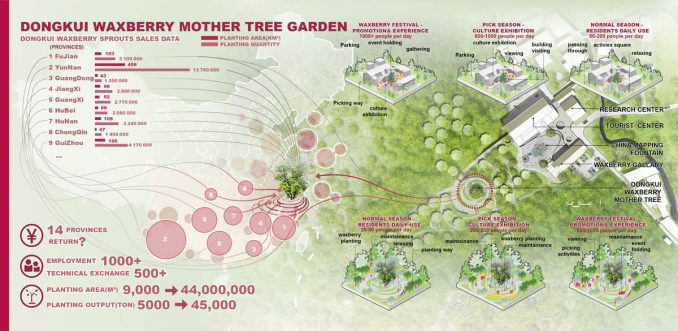
The plan improved the environment around the mother tree of the DW species and added activities to attract visitors. The DW Expo Hall disseminated its history and culture, and Waxberry Heritage Area rebuilt the villagers’ sense of belonging and confidence.
A Belt: High-productivity Area
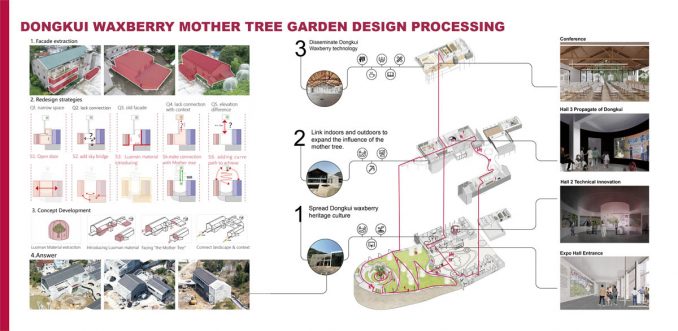
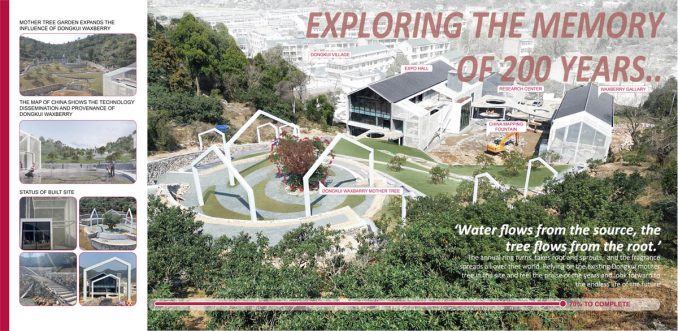
Transforming single planting gardens in Pingtian Town, based on terrain, climate, and planting scale to establish “nurturing gardens,” “Luoman (an ecological technology to cage the waxberry) + intercropping gardens,” and “Luoman + sightseeing gardens.” A waxberry station was set up with an HSFS (production + storage + preservation + sales) system to efficiently manage production, storage, preservation, and sales.
A Ring: Waxberry Industrial Chain
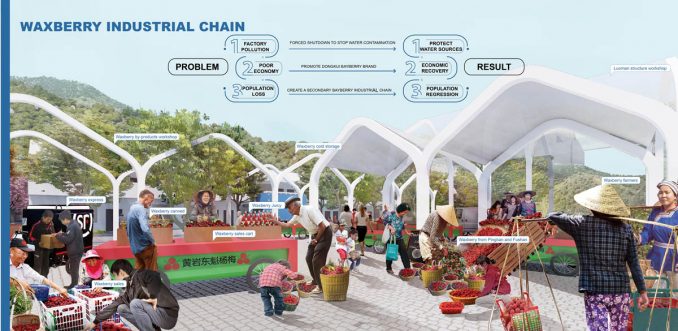
Due to First-grade water protection zone’s limitation, closed factories are parts of the DW industrial chain, forming a network system for planting, harvesting, cold chain logistics, and processing.
Step 4: Establish the Waxberry Data Platform.
Plan established DW big data for planting, processing research and development, and branding, with a collaborative platform for government, industry, and research institutions.
Step 5: Repeat the Planning Mode in China
The “multi-industry + multi-regional coordinated development” mode has become a model for the development of DW in China.
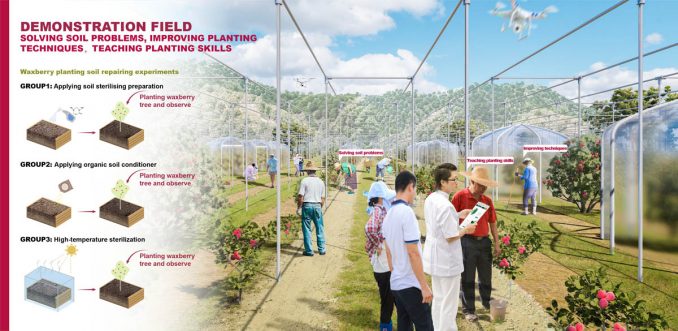
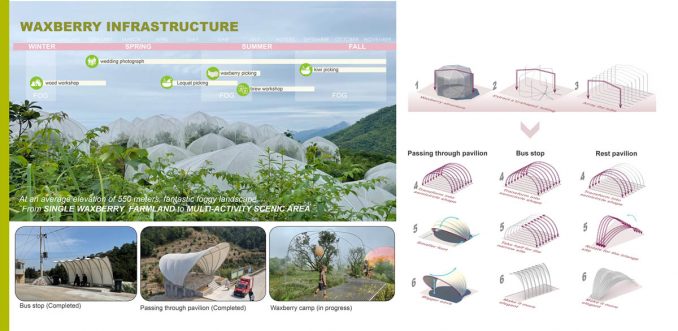
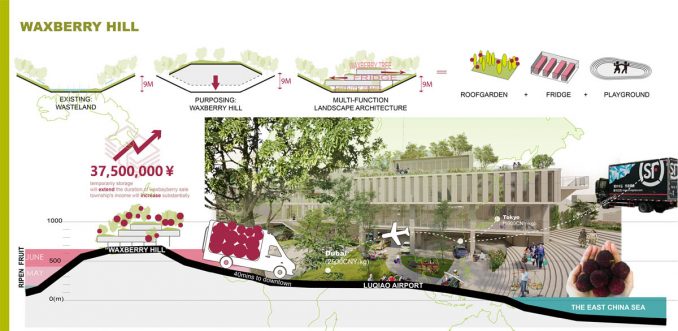
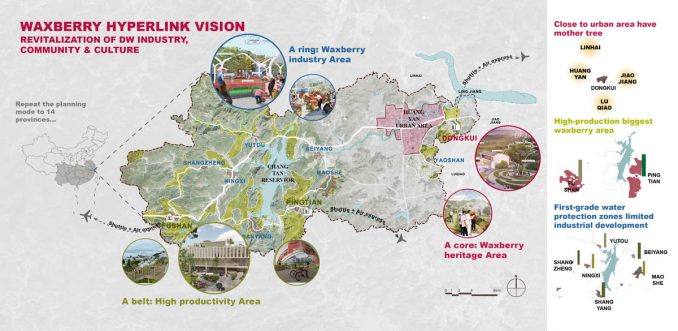
The Waxberry Hyperlink has relinked Dongkui Waxberry (DW) industry, cultural heritage, and technology dissemination, and promoted local communities’ confidence through its five steps. It serves as a national operational demonstration for DW rural revitalization.
Waxberry Hyperlink: Revitalization of DW Industry, Community & Culture
Design firm: LANDartitude 景度景观
Project Leads: Ying Zeng, Liuyin Chen, Xing Xu, Shaoyin Zhang
Project Team: Yuwei Shan, Junjie Lin, Fuman Yang, Jinghua Liu, Nianyan Chen, Shihan Yin, Jiamu Yuan, Yu Wang, Yan Lin, Ke Zhang, Weijie Xue, Zhuying Lu, Yaowu He, Wen Zhu,Qianli Jiang
Financial expert:Zhongyang Su, Xianneng Su
Agriculture expert:Xianjie Mou,Kang Yang,Lihong Wang
Luoman and Waxberry expert:Qianbin Huang
Waxberry expert: Jindao Huang
Architecture consultants:Zhao Zheng, Chenxi Zhong, Zihe Deng
Engineering consultants: Yong Wang, Yaotai Zhu
Curtain Wall Construction consultants: Jing Li
Water supply and drainage consultants: Hong Lei
Electric engineering consultants: Jian Wang
LDI consultants: Yingchun Zheng, Rulyan Zheng, Rushuang Zhang,zhibiao Liu,Xuqiang Chen
